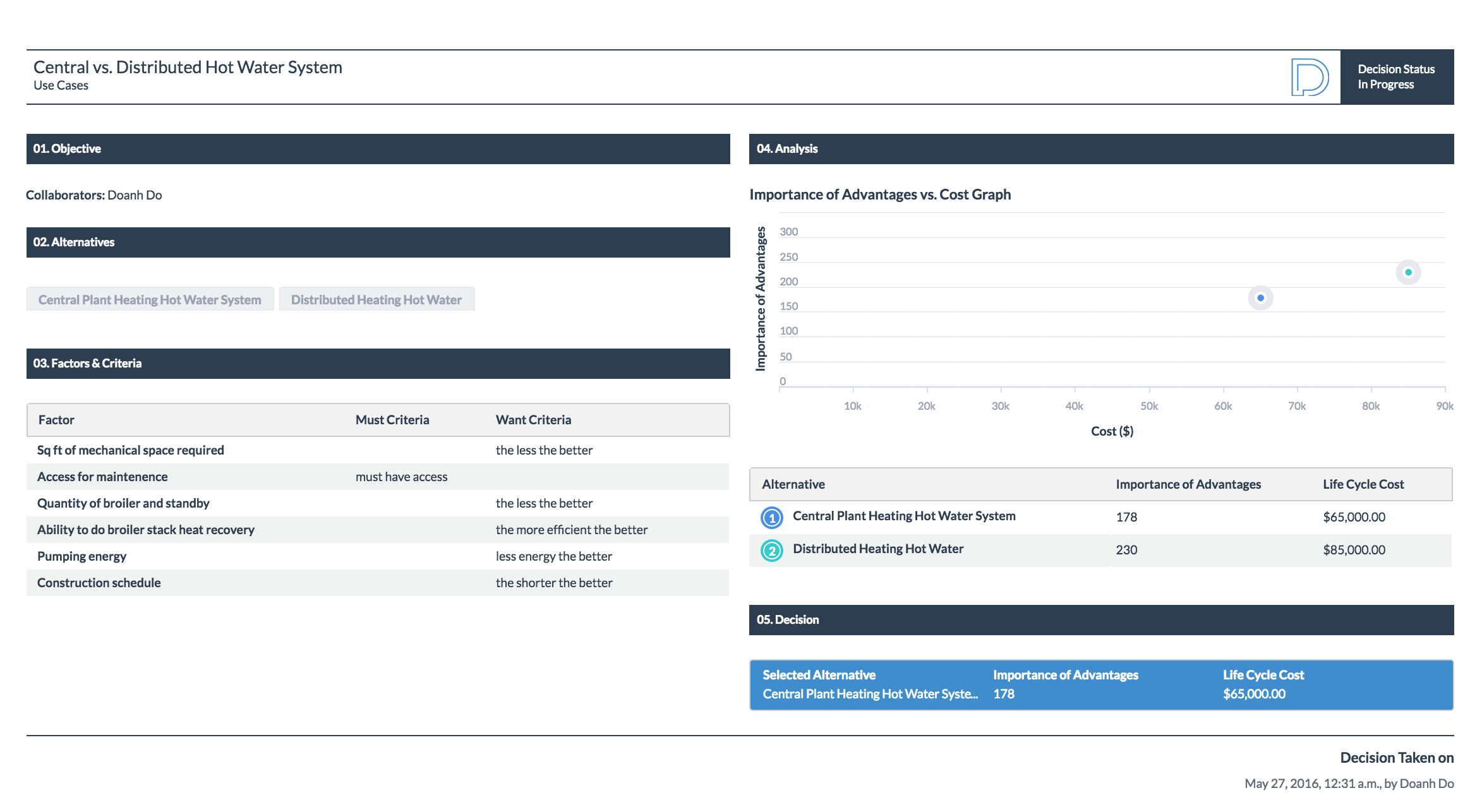All characters, companies, and events in this scenario are entirely fictional. The goal of the scenario is to demonstrate how a contractor might use the Paramount Decisions process to develop a transparent and sound decision.
A plumbing design-assist contractor working on a new commercial project needs to determine whether he should use a central or a distributed hot water system. Both design alternatives are very common in the industry and he wants to determine which one is most suitable for this particular project. He is using Paramount Decisions because the process allows him to: 1) make an analysis that considers the context of this project, 2) gather feedback from stakeholders on the advantages of the options, 3) document the process, and 4) communicate his recommendation to the client.
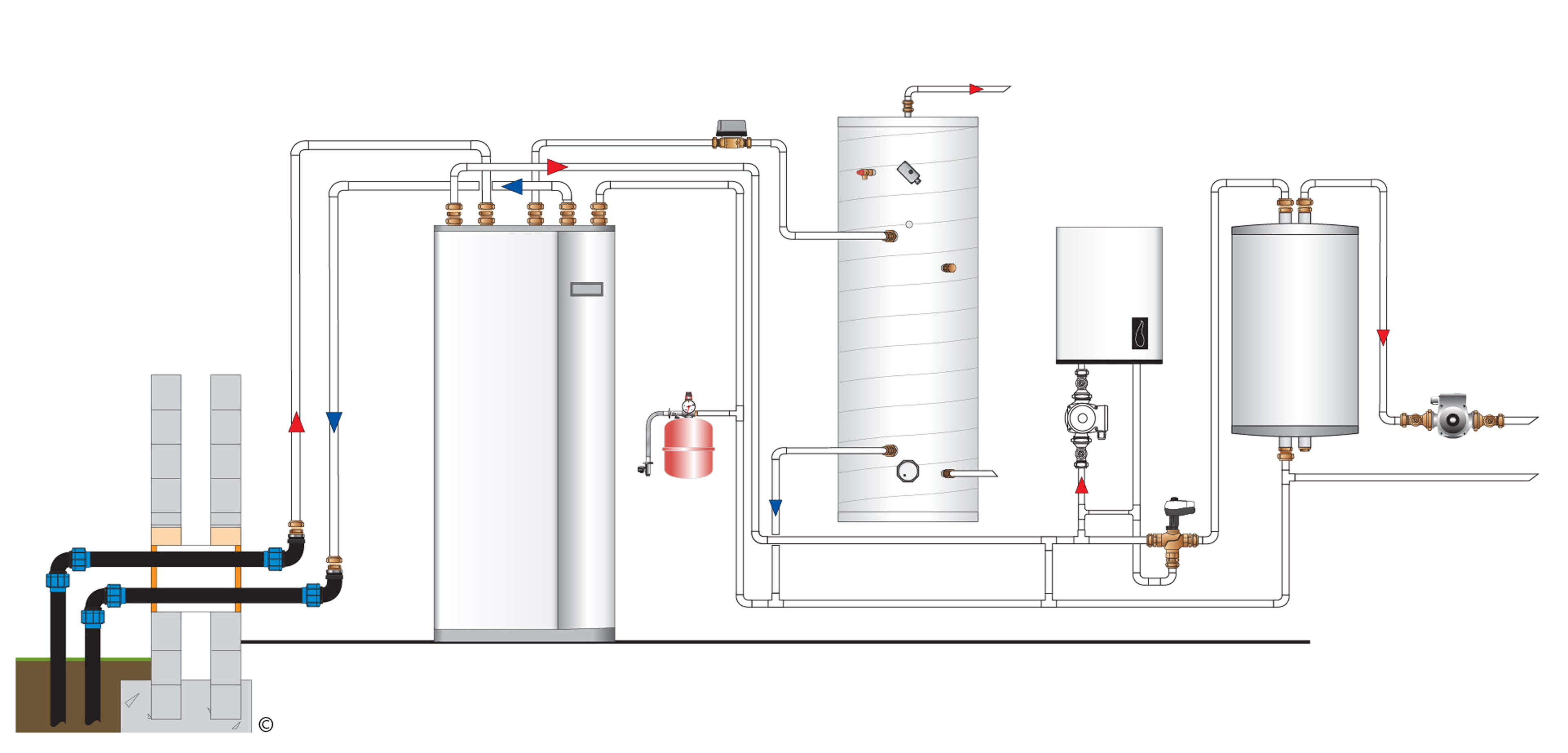
The first step is to define the decision's goals and objectives. In this situation the goal is to choose whether to use a central or a distributed hot water system. The stakeholders of this decision include: the contractor, the owner, and the future tenants.
There are two alternatives for this decision: 1) Central Heating System or 2) Distributed Heating System. A centralized system will require less mechanical materials but is less energy efficient. It will take longer to construct a centralize system versus a distributed one. A distributed heating system will require more primary and standby broilers.
For this decision, he has considered these factors:
1) Square feet of mechanical space required
2) Access for maintenence
3) Quantity of broiler and standby
4) Ability to do broiler stack heat recovery
5) Pumping energy
6) Construction schedule
The criteria of each of these factors are shown below.

After he has locked down the factors and criteria, he goes to his engineer to ask for data relevant for this decision. The data of the alternatives for each factor is also called an attribute, which is a characteristic, quality, or consequence of one alternative. Using data from the manufacturer and his engineer's calculations, he is able fill out the attributes.
The attributes of this decision are shown below.
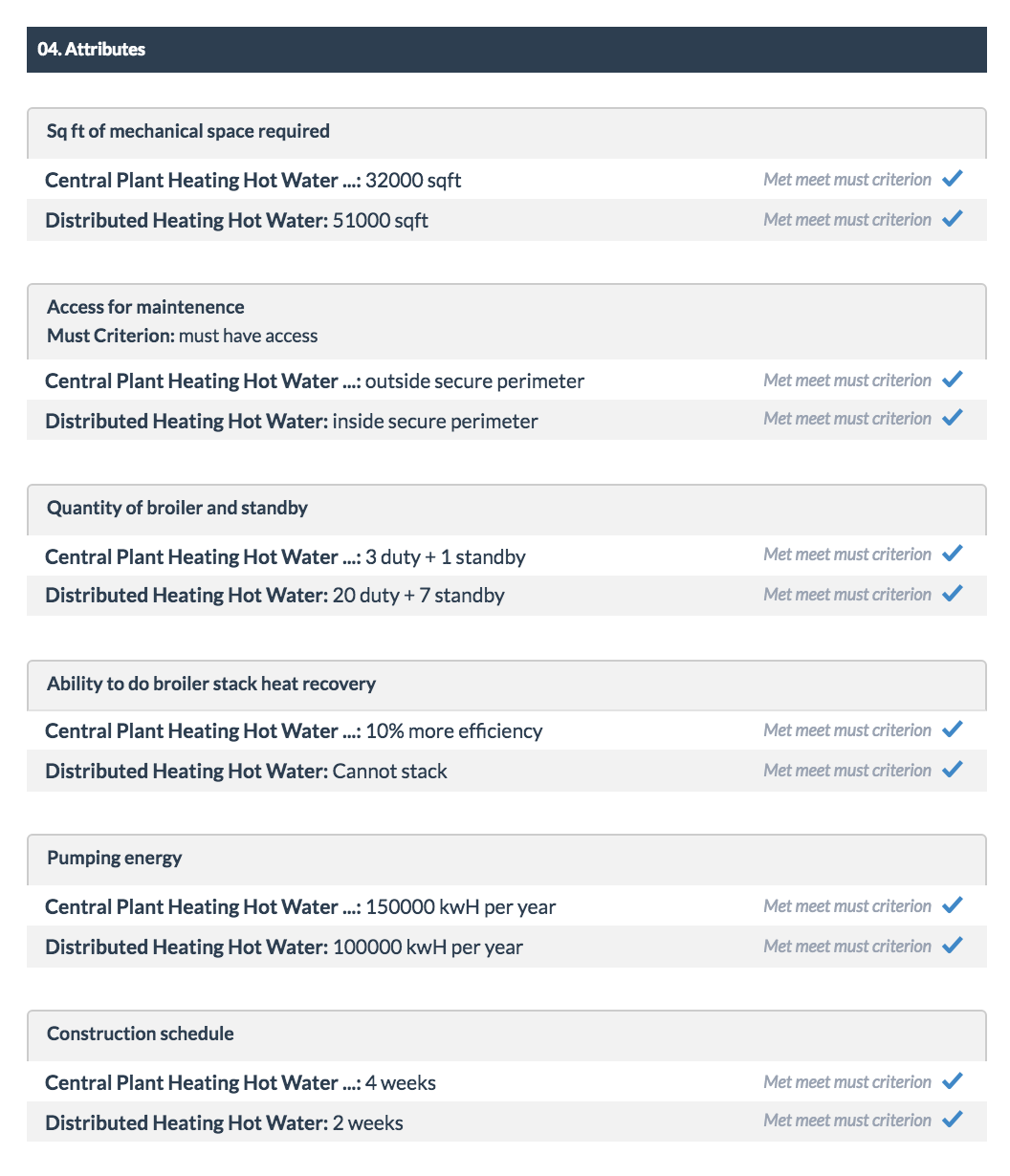
The key insight in making good decisions is to base them on the advantages of alternatives. Following the Paramount Decisions' three step approach, he is able to identify the least preferred attribute and the advantages of the other alternatives relative to it. He finishes this step by selecting the most important advantage within each factor.
Some of the advantages that he found through this analysis are:
1) A central system requires 19000 less sqft of mechanical equipment than a distributed system.
2) The distribute system will take 2 weeks less to complete construction versus a central system.
3) There is a 10% reduction in energy consumption with a central system.
4) The central system requires 17 fewer duty and 6 fewer standby broilers.
5) The distributed system has access for maintenence from inside the build as oppose to having to access the maintence compartment from the outside with a central system.
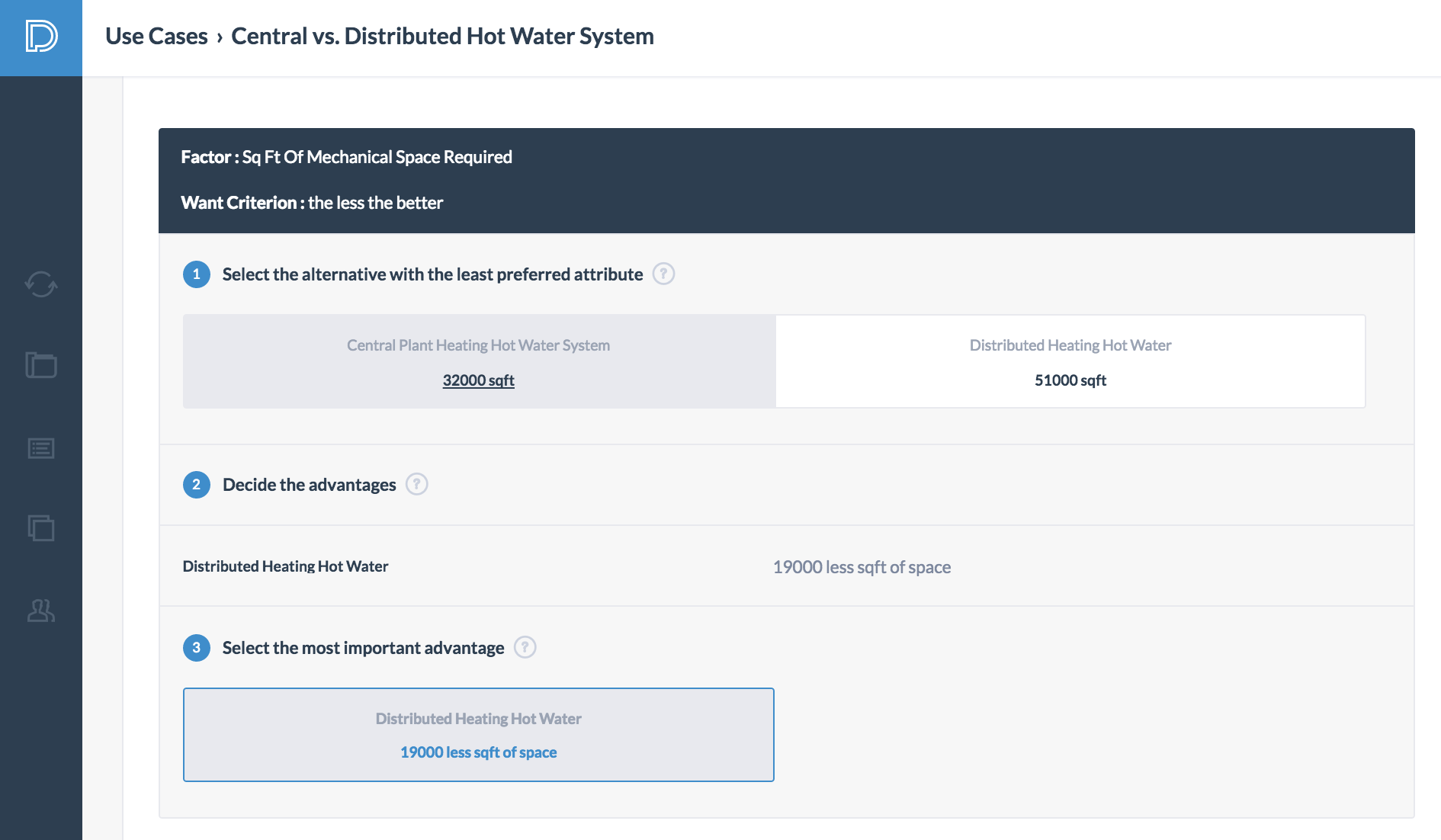
In the sixth step, he talks with the relevant stakeholders and gets their feedback on which advantage they find most valuable. After selecting the paramount advantage, he proceeds through the three step process and assigns a weight to each of the advantages.
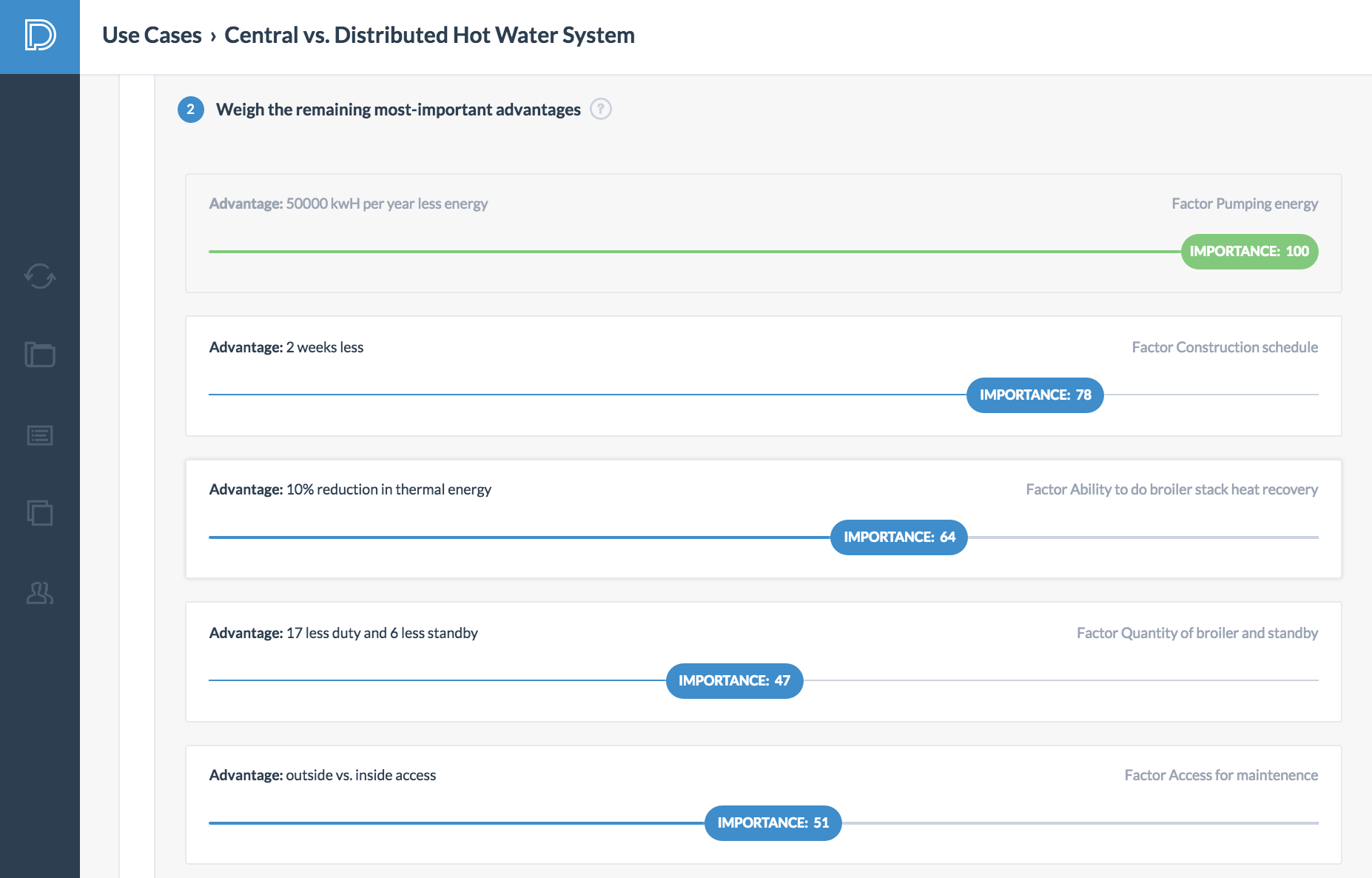
The seventh step in the decision-making process is to define the cost. The cost is the price that must be paid in order to obtain an alternative and can be broken into several categories. He conducts a whole life cycle cost analysis on both systems taking into consideration their construction cost, energy cost, and maintenence cost over the lifetime of the building (40 year period). He then adds the total cost into Paramount Decisions.

He finally makes his decision based on the total importance of advantages vs cost. In this situation, alternative 1 (Central Heating System) has a total importance of advantages of 178 and costs 65,000 USD. Alternative 2 (Distributed Heating System) has a total importance of advantages of 230 and costs 85,000 USD.
After consulting with the stakeholders, he was able to determine that it was not worth it to spend an additional 20,000 USD to obtain 52 additional importance of advantages. The stakeholders believed that the money will produce a greater amount of value if it is spent on the furniture and new LED lights for the building. The stakeholders appreciated his thorough analysis and liked the fact that they can see where the alternatives lie in terms of their advantages and total cost. They were able to make an informed decision knowing the trade-off between the advantages and the cost.
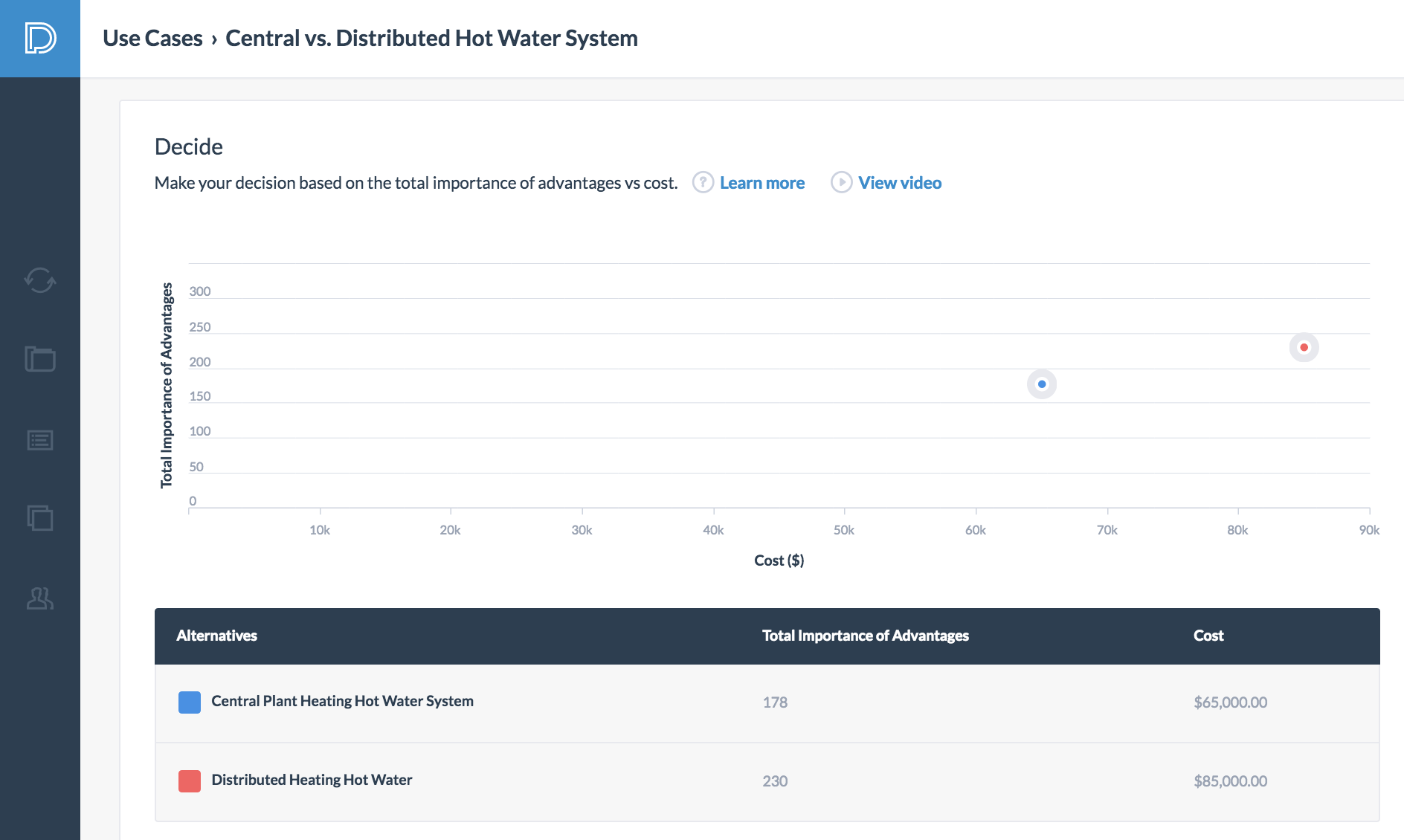
One of the benefits of using Paramount Decisions is the automatically generated reports. The software can create two types of reports base on the data inputted for the decision: 1) a full report and 2) a single page (A3 report). The contractor is able to send out the report to each of the stakeholders to communicate the rationale of this decision. On the next project, he will reference the factors and criteria that he used for this decision and re-use/modify them to fit his new decision. Paramount Decisions has increased the speed of his decision-making process and allowed him to solicit inputs from stakeholders in the process.
